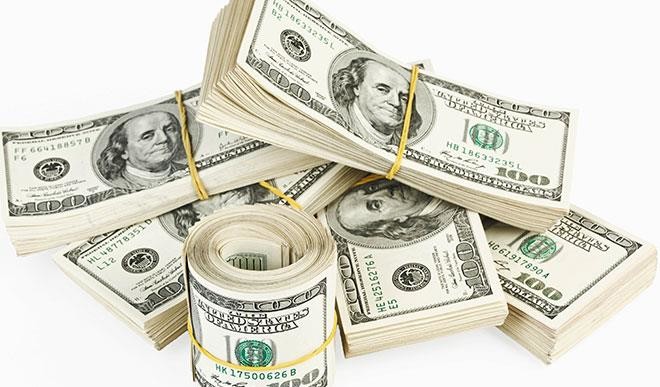Kenya has pumped $300 million into the market to protect its shilling against soaring dollar.
Analysts predict that the shilling could hit 105 units to the dollar by year ending.
The Central Bank of Kenya has therefore engaged in periodic interventions, to limit the shilling’s movement.
The intervention has so far seen the country’s foreign currency reserve dropping to $8.15 billion as at the end of last week, from $8.45 billion at the start of October.
The reserves are expected to drop further at the close of business on Friday following the pressure the shilling has faced this past week.
Last Thursday, the shilling weakened to a near 10-month low due to importer demand, especially from oil companies. Commercial banks quoted the shilling at 103.05/25 in early trade, a level last seen mid-January this year, when it traded at 103.15/25, according to data from Refinitiv.
“There is excess shilling liquidity in the market so banks can afford to buy dollars.
“Also, there is demand from importers bringing in goods ahead of the festive
season,” a senior trader from one of the Tier One commercial banks said.
Kenya has in the nine months to September this year seen its import bill rise to $13 billion, against $4.71 billion in export earnings, data released a fortnight ago by the Kenya National Bureau of Statistics shows.
Last Thursday, Global ratings firm Fitch Solutions, in a report, predicted challenges ahead for the growth outlook and higher inflation.
“We forecast the shilling to weaken to 103.5 against the dollar by end of 2018, down from 100.9 at the time of writing this report,” Fitch Solutions said in its report on the regional currencies.
In the past one month, the shilling has already depreciated by 1.35 per cent with Renaissance Capital estimating the value will drop further to 105 against the dollar as the year closes.
Last month, the International Monetary Fund (IMF) in its staff review indicated that the Kenyan currency may be overvalued by up to 17.5 per cent adding that it risked being classified as managed rather than operating on the forces of demand and supply.
This latest pressure on the shilling comes at a bad time. It means the government will have to spend more to pay its debts, and especially those due at the end of the month, if the dollar pressure is sustained.
This is because with every percentage devaluation, the size of the country’s external debt grows.
National Treasury Cabinet Secretary Henry Rotich would want to be keen to see a stable shilling, as it has remained in the past 27 seven months so as to avoid further bumping up of external debt repayments, which are projected at $3.6 billion this financial year ending June 2019.
Already a bulk of the country’s external debt obligations are payable in dollars and any movement on the shilling will be costlier in debt repayments.
“As Kenyan authorities have turned to international markets to borrow, their exposure to currency risks have increased. Indeed, almost half of the public sector debt is now denominated in foreign currency,” economists at the London-based research consultancy Capital Economics said early this month.
In September 30 of the 40 commercial banks polled by the CBK predicted that the shilling will weaken in the 12 months to next August.
The slide in the value of shilling is caused by increasing imports, as a result of recovery of the country’s economic activities.
Source: East Africa
Kenya pumps $300m to defend shilling
RELATED ARTICLES




